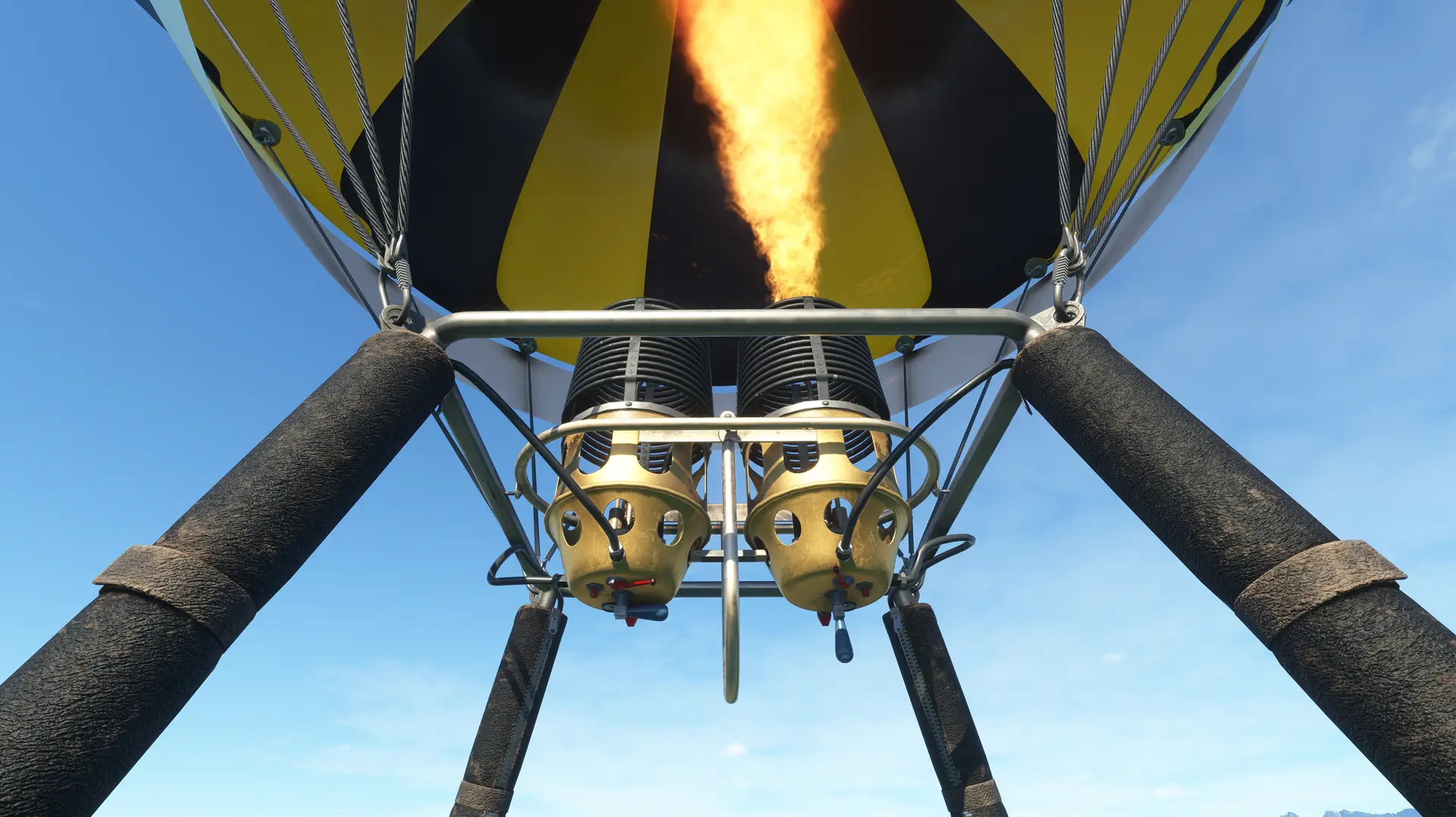The Hot Air Balloon is a lighter-than-air vehicle system comprising an envelope (the balloon), a gondola, and an air heater. The envelope, shaped like an inverted teardrop, suspends the gondola via cables. The gondola, constructed of woven wicker, carries the pilot and up to two passengers. The heater, fueled by propane, is mounted on a rail system that is fixed above the main portion of the gondola.
Operation of the hot air balloon is simple in concept but requires a high level of environmental situational awareness and coordination by the pilot for proper and safe air travel. The heater fills the envelope with warmed air, making the entire system buoyant. Once aloft, the pilot can add heat in varying rates to increase altitude, vent air from the envelope to reduce altitude, or add heat intermittently and vent intermittently to maintain altitude. Wind, out of the control of the pilot, powers horizontal travel of the hot air balloon; speed and direction of wind varies with altitude. Pilots can determine general wind speeds and directions from environmental cues, notably cloud motion and surface effects.
To navigate in the hot air balloon, a pilot ascends into and out of altitude levels, each altitude level having an identified wind characteristic. An example is a pilot ascending gently from ground level, where no wind blows, to 1,000 feet above ground level, where a wind blows at a steady five miles per hour to the east. This will allow the pilot to fly at a leisurely pace to the east, then gently land again by carefully descending out of the eastward wind into still conditions.
It is imperative that pilots be able to identify signs of turbulence or high winds, as hot air balloons should only be operated in calm conditions with gentle winds away from detrimental obstacles including power lines and radio antennas.
Visual cues and a variometer, which indicates ascent or descent with tones, assist the pilot in navigating the hot air balloon.














